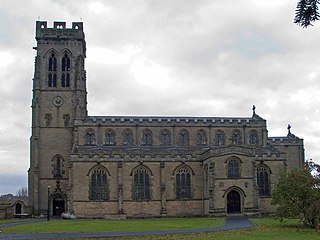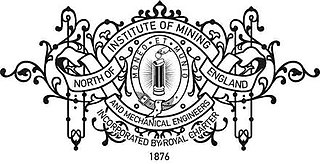History
Their first project in 1982 was to work with the historian W.K.V.Gale to record the famous John Bradley Rolling Mill in the English Midlands, as it was due to close within a week and was the last of its kind in the area.
Since then they have recorded many industries, several of which have since closed. [1] They have also produced several documentary history programmes, particularly about inland waterways (canals) and mining. [3]
I.A.Recordings started in Britain but have since recorded sites in Ireland, Belgium, France, Germany, Poland, Spain and the United States. [4]
They have developed their own specialist video technology such as helmet-mounted cameras for use underground and MineCam, a remote-controlled camera for mine shaft exploration. [5]
I.A.Recordings use broadcast equipment and techniques and since 2005, High Definition Video. [3]
By 2008, they had over 38,000 minutes of original footage in the archive, but as they are voluntary they have only had time to edit a relatively small amount for release on DVD.
Major subjects
Subjects already available for public viewing include a brickworks employing hand-moulders, making brass hames for horse harnesses, many locksmith workshops in Willenhall recorded for the Lock Museum, making files by hand, a history of the Shropshire Union Canal made for the Ironbridge Gorge Museum Trust, a history of the Birmingham Canal Navigations, building new canal tunnels in 1984 and 1989, the last run of 'Tom Pudding' compartment boats, a history of the Manchester Ship Canal, an underground tour of the ancient Clive Copper Mine, a history of Snailbeach Lead Mine, many mines in Ireland including Glengowla, Avoca, Glendalough, Glendasan, Glenmalur, Tara, Silvermines, Shalee, Allihies; Bunmahon and Tankardstown on the Copper Coast; and Ballycorus; Drakelow Tunnels factory, Carrs and other lead and zinc mines in the Nenthead area, working and disused Cornish mines including South Crofty, Geevor, Cligga Head, Rosevale, Taylor's & Michell's shafts near Redruth, Tolgus Tin Company, Wheal Jane and Kennall Vale Gunpowder Works; mines around Llangollen, Pontneddfechan Gunpowder Works, carrying pottery on the Caldon Canal, Donisthorpe Colliery, Alan Paine Knitwear, Bagworth Colliery, Helsington Snuff Mill, a steam-powered dredger, dry barrel coopering, Morse's Level coal mine, Charlecote water-powered flour mill, stone quarrying and cutting in the Forest of Dean, carrying newsprint and sewage effluent by canal, rescuing an ancient Severn trow sailing barge and then sailing it after restoration, the abandoned Wren's Nest limestone mines, a tanker carrying diesel on the River Humber and Aire and Calder navigation, compartment boats taking coal to Ferrybridge power station, an oak bark tanning works, large dragline excavators mining open pit coal, Annesley-Bentinck colliery, mines around Linares, Spain, and ancient mines in the Harz mountains of Germany.
I.A.Recordings also maintain a widely used [6] [7] collection of over 600 links to other Industrial Archaeology-related websites and host the Industrial Archaeology and History Web Ring .

Morda is a village on the outskirts of the town of Oswestry, Shropshire, England, located near the border of England and Wales.

Industrial archaeology (IA) is the systematic study of material evidence associated with the industrial past. This evidence, collectively referred to as industrial heritage, includes buildings, machinery, artifacts, sites, infrastructure, documents and other items associated with the production, manufacture, extraction, transport or construction of a product or range of products. The field of industrial archaeology incorporates a range of disciplines including archaeology, architecture, construction, engineering, historic preservation, museology, technology, urban planning and other specialties, in order to piece together the history of past industrial activities. The scientific interpretation of material evidence is often necessary, as the written record of many industrial techniques is often incomplete or nonexistent. Industrial archaeology includes both the examination of standing structures and sites that must be studied by an excavation.

Alveley is a village in the Severn Valley in southeast Shropshire, England, about 11 miles (18 km) south-southeast of Bridgnorth. It is in the civil parish of Alveley and Romsley. The 2011 Census recorded the parish population as 2,098.
The Association for Industrial Archaeology (AIA) was established in 1973 to promote the study of industrial archaeology and to encourage improved standards of recording, research, conservation and publication. It aims to support individuals and groups involved in those objectives and to represent the interests of industrial archaeology at a national level. It is a non-profit making registered charity and a company limited by guarantee, its registered office is care of the Ironbridge Gorge Museum Trust.

Broseley is a market town in Shropshire, England, with a population of 4,929 at the 2011 Census. The River Severn flows to its north and east. The first iron bridge in the world was built in 1779 across the Severn, linking Broseley with Coalbrookdale and Madeley. This contributed to the early industrial development in the Ironbridge Gorge, which is now part of a World Heritage Site.

Pendlebury is a suburban town in the City of Salford, Greater Manchester, England. The population at the 2011 Census was 13,069. It lies 4.1 miles (6.6 km) northwest of Manchester city centre, 3.4 miles (5.5 km) northwest of Salford, and 5.9 miles (9.5 km) southeast of Bolton.

Bradford is a district of east Manchester, England, two miles north east of the city centre. The population at the 2011 census was 15,784. Historically in Lancashire, after the closure of its heavy industries Bradford was for many years an economically deprived area but has undergone regeneration with the building of the City of Manchester Stadium which hosted the 2002 Commonwealth Games and is now home to Manchester City F.C.. Bradford is neighboured by Beswick to the south and the two areas are sometimes referred to as Bradford-with-Beswick. The River Medlock and the Ashton Canal run through Bradford.

The Somerset Coalfield in northern Somerset, England is an area where coal was mined from the 15th century until 1973. It is part of a larger coalfield which stretched into southern Gloucestershire. The Somerset coalfield stretched from Cromhall in the north to the Mendip Hills in the south, and from Bath in the east to Nailsea in the west, a total area of about 240 square miles (622 km2). Most of the pits on the coalfield were concentrated in the Cam Brook, Wellow Brook and Nettlebridge Valleys and around Radstock and Farrington Gurney. The pits were grouped geographically, with clusters of pits close together working the same coal seams often under the same ownership. Many pits shared the trackways and tramways which connected them to the Somerset Coal Canal or railways for distribution.

Wet Earth Colliery was a coal mine located on the Manchester Coalfield, in Clifton, Greater Manchester. The colliery site is now the location of Clifton Country Park. The colliery has a unique place in British coal mining history; apart from being one of the earliest pits in the country, it is the place where engineer James Brindley made water run uphill.

Mining in Wales provided a significant source of income to the economy of Wales throughout the nineteenth century and early twentieth century. It was key to the Industrial Revolution.

Trencherfield Mill is a cotton spinning mill standing next to the Leeds and Liverpool Canal in Wigan, Greater Manchester, England. It was built in 1907. It was taken over by the Lancashire Cotton Corporation in the 1930s and passed to Courtaulds in 1964. The mill was driven by a 2,500 hp triple-expansion four-cylinder engine built by J & E Wood of Bolton in 1907. The two halves of the engine were called Rina and Helen. They drove a 26-foot flywheel with 54 ropes at 68 rpm. The engine was stopped in 1968. The mill is now part of the Wigan Pier redevelopment area and is used for other purposes.
The Morda Tramway refers to two industrial railways south of Oswestry, on the border between England and Wales. They connected the coal pits around Morda to transport networks, the first to the Montgomery Canal and the second to the Cambrian Railways at Whitehaven.

Coal mining in the United Kingdom dates back to Roman times and occurred in many different parts of the country. Britain's coalfields are associated with Northumberland and Durham, North and South Wales, Yorkshire, the Scottish Central Belt, Lancashire, Cumbria, the East and West Midlands and Kent. After 1970, coal mining quickly collapsed and had practically disappeared by the 21st century. The consumption of coal – mostly for electricity – fell from 157 million tonnes in 1970 to 18 million tonnes in 2016, of which 77% was imported from Colombia, Russia and the United States. All of the 4 million tonnes of coal mined in the UK in 2016 were from open-cast coal mines. Employment in coal mines fell from a peak of 1,191,000 in 1920 to 695,000 in 1956, 247,000 in 1976, 44,000 in 1993, and to 2,000 in 2015.

The Lancashire Coalfield in North West England was an important British coalfield. Its coal seams were formed from the vegetation of tropical swampy forests in the Carboniferous period over 300 million years ago.

The North of England Institute of Mining and Mechanical Engineers (NEIMME), commonly known as The Mining Institute, is a British Royal Chartered learned society and membership organisation dedicated to advancing science and technology in the North and promoting the research and preservation of knowledge relating to mining and mechanical engineering. The membership of the Institute is elected on the basis of their academic and professional achievements with Members and Fellows entitled to the postnominal MNEIMME and FNEIMME. The Institutes’ membership is predominately from local industry and from academics at Durham and Newcastle Universities, though members are also located further afield across the UK.

Bradford Colliery was a coal mine in Bradford, Manchester, England. Although part of the Manchester Coalfield, the seams of the Bradford Coalfield correspond more closely to those of the Oldham Coalfield. The Bradford Coalfield is crossed by a number of fault lines, principally the Bradford Fault, which was reactivated by mining activity in the mid-1960s.
The Oldham Coalfield is the most easterly part of the South Lancashire Coalfield. Its coal seams were laid down in the Carboniferous period and some easily accessible seams were worked on a small scale from the Middle Ages and extensively from the beginning of the Industrial Revolution in the early 19th century until the middle of the 20th century.

The coal industry in Wales has played an important role in the Industrial Revolution in Wales. Coal mining expanded in the eighteenth century to provide fuel for the blast furnaces of the iron and copper industries that were expanding in southern Wales. The industry had reached large proportions by the end of that century, and then further expanded to supply steam-coal for the steam vessels that were beginning to trade around the world. The Cardiff Coal Exchange set the world price for steam-coal and Cardiff became a major coal-exporting port. The South Wales Coalfield was at its peak in 1913 and was one of the largest coalfields in the world. It remained the largest coalfield in Britain until 1925. The supply of coal dwindled, and pits closed in spite of a UK-wide strike against closures. The last deep mine in Wales, Tower Colliery, closed in 2008, after thirteen years as a co-operative owned by its miners.

Bentley Colliery was a coal mine in Bentley, near Doncaster in South Yorkshire, England, that operated between 1906 and 1993. In common with many other mines, it suffered a disaster in 1931 when 45 miners were killed after a gas explosion. The site of the mine has been converted into a woodland.
Margaret Faull is an archaeologist and museum director, noted for her work on Anglo-Saxon England and industrial archaeology.















